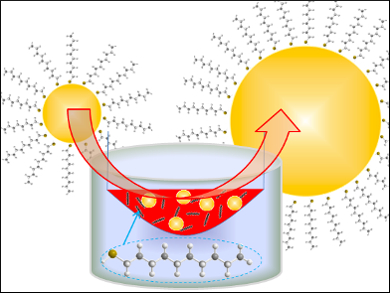The optical, electrical and catalytic properties of gold nanoparticles depend on their size. While there have been extensive studies of gold nanoparticles of different sizes, the precise control over the size and size monodispersity has been a constant challenge in the exploration of the optical and electrical properties for a wide range of applications.
Han-wen Cheng and colleagues, State University of New York at Binghamton, NY, USA, have determined factors controlling the growth of gold nanoparticles in a thermally activated aggregative process. The nanoparticle size depends on the concentration and chain length of alkanethiols that cap the nanoparticles. These factors are correlated with the adsorption isotherm and cohesive energy of the capping molecules.
The gold nanoparticles can be grown in sizes from less than 2 nm up to 10 nm with a size variation as low as 5 %, depending on the concentration and chain length of the capping molecules. This type of size controllability is essential for exploring size-dependent optical, electrical and catalytic properties of gold nanoparticles in various technological applications.
- Assessing the Role of Capping Molecules in Controlling Aggregative Growth of Gold Nanoparticles in Heated Solution,
Han-Wen Cheng, Mark J. Schadt, Chuan-Jian Zhong,
Chem. Asian J. 2015.
DOI: 10.1002/asia.201500857



